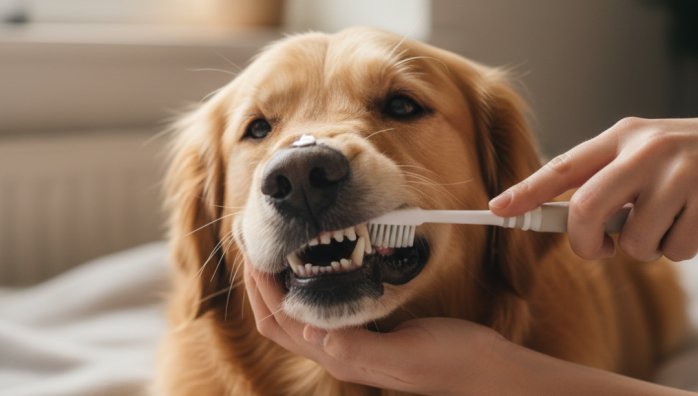Effective Tooth Brushing for Cats and Dogs
by admin in Pet Care Basics 26 - Last Update November 24, 2025

I\'ll be honest, the first time a vet told me I needed to brush my dog\'s teeth, I probably laughed. It seemed like a ridiculous, impossible task. My dog, a rescue with a quirky personality, barely let me clip his nails, let alone stick a strange-looking brush in his mouth. But when I started noticing his breath getting persistently worse, I knew I had to figure it out. It wasn\'t just about \'doggie breath\'; it was about his long-term health, and that\'s something I take very seriously.
Choosing the right tools was my first step
Walking down the pet aisle can be overwhelming. There are so many options. What I learned through trial and error is that the \'best\' tool is simply the one your pet will tolerate. For my Golden Retriever, a long-handled, dual-head toothbrush works wonders. It lets me reach his back molars without putting my whole hand in his mouth. For my notoriously fussy cat, however, a tiny little finger brush was the only thing she\'d accept. The key for both was the toothpaste. Never, ever use human toothpaste; it can be toxic to pets. I found that a poultry-flavored enzymatic toothpaste was a game-changer. They see it as a treat, which completely shifts the dynamic.
Making the introduction a positive experience
My biggest mistake initially was trying to rush the process. I learned quickly that this has to be a slow, patient introduction. Here\'s the routine that finally worked for me:
- Day 1-3: I just let them lick the pet-safe toothpaste off my finger. No brush in sight. This built a positive association. It’s a tasty treat, not a scary procedure.
- Day 4-6: I put a dab of toothpaste on the brush and let them lick it off. Again, no actual brushing. Just getting them used to the tool itself.
- Day 7 and beyond: I started by gently lifting their lip and brushing just one or two teeth in a circular motion for a few seconds, then stopping and giving lots of praise. Over weeks, I gradually increased the duration until I could do a quick but thorough brush of all the outer surfaces of their teeth.
When brushing just isn\'t enough (or isn\'t possible)
I know that for some pets, especially those with past trauma or severe anxiety, brushing can feel like a battle you\'ll never win. While brushing is the gold standard, doing something is always better than doing nothing. I\'ve supplemented our routine with other dental aids, especially on days when we\'re short on time. Things like dental chews, water additives, and prescription dental diets can be incredibly helpful. However, this is one area where I always consult my vet. They can help you choose products that are proven to be effective and are right for your pet\'s specific health profile. It\'s about creating a comprehensive dental plan that works for you both.
Ultimately, it took patience, but now it\'s just a normal part of our evening routine. Their breath is better, their gums look healthier, and I have peace of mind knowing I\'m doing my best to prevent painful dental disease down the road.














